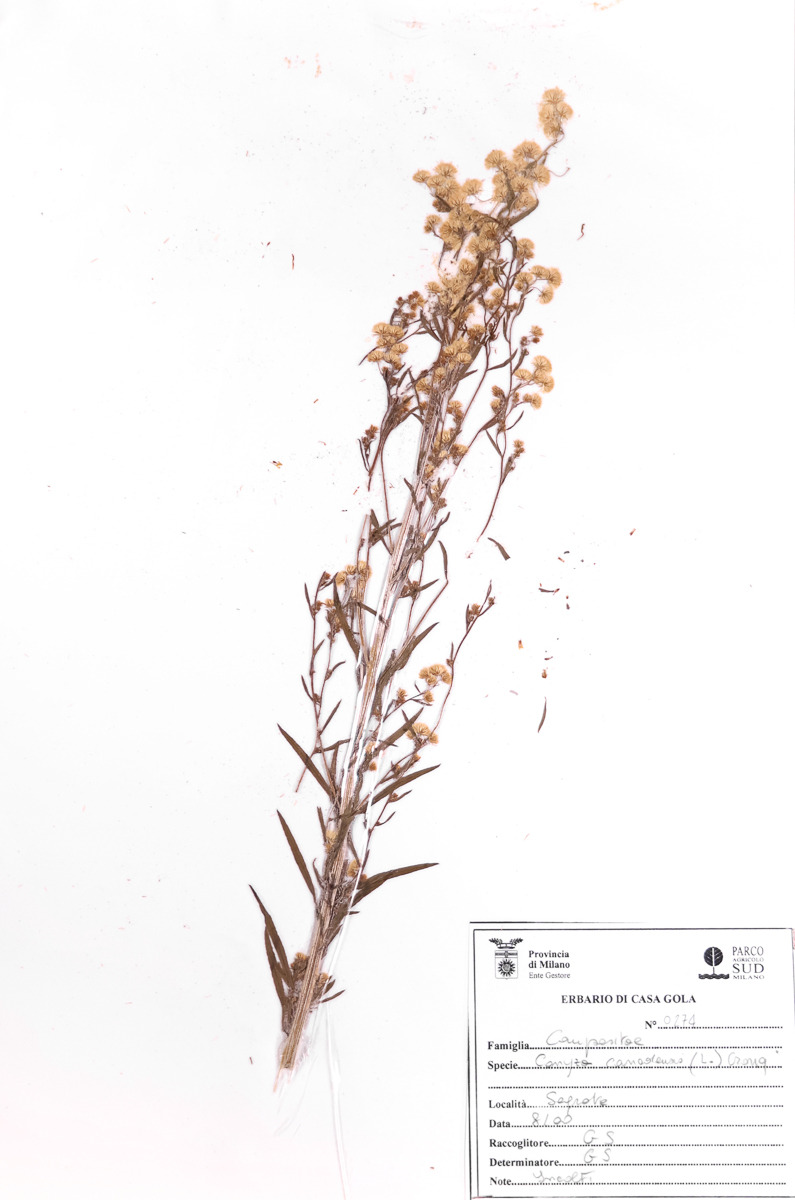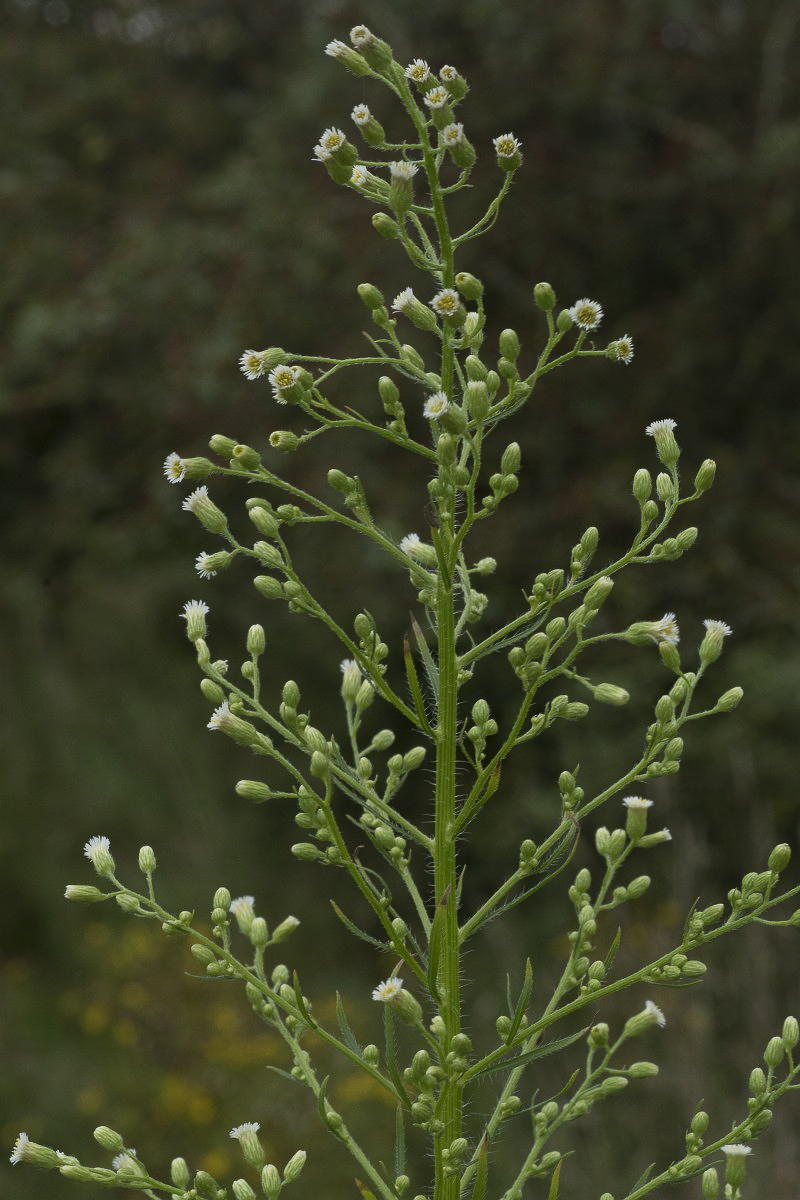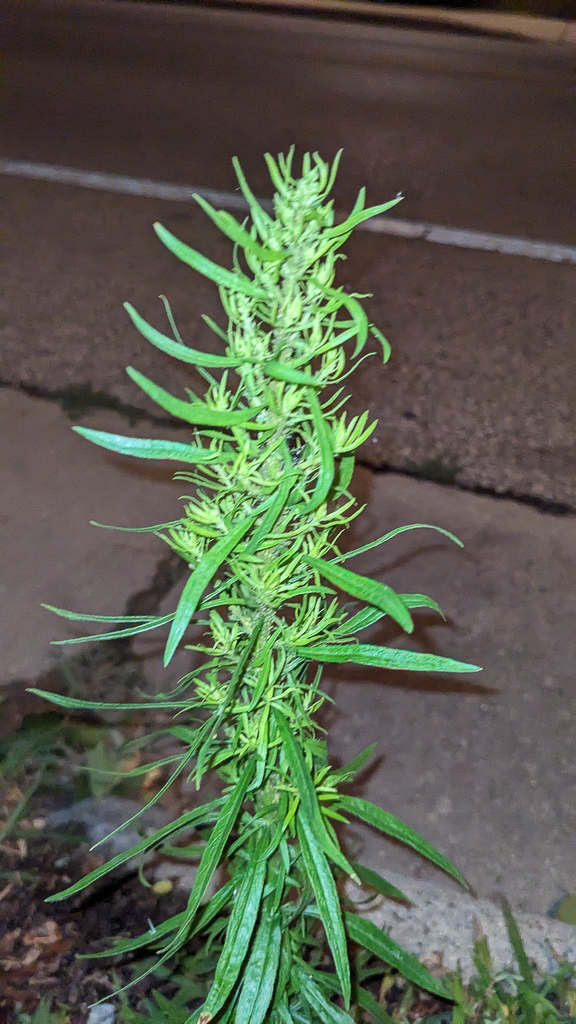Canadian horseweed
Scientific Name: Erigeron canadensis L.
Family: Asteraceae
MORPHOLOGY
Habit and Size: An annual or biennial herbaceous plant, hairy and bristly, with a taproot, reaching heights of 30-80 (150) cm.
Stem: The stem is cylindrical, erect, simple or branched at the inflorescence.
Leaves: The basal rosette consists of elongated oval leaves with distinct petioles, either entire or with some sharp teeth. The cauline leaves are lanceolate, velvety with short hairs, and sparsely ciliate on the margin and petiole, which becomes smaller and disappears halfway up and upwards.
Flowers: Numerous and fragrant flowers (up to over 200 per capitulum), the central tubular ones whitish or yellowish, and the peripheral ligulate ones, slightly larger than the tubular ones, white or pale pink, are grouped in small cylindrical capitula of 3–4 mm forming a large terminal dense and branched panicle. The involucre is bell-shaped with bracts arranged in three series, lanceolate, subglabrous or slightly pubescent, with a parchment-like margin, as long as the ligulate flowers and sometimes even longer. Blooms from May to October.
Fruits and Seeds: The fruit is an achene of 1-1.5 mm covered with short hairs and topped with a pappus three times longer, with numerous dirty white bristles.
DISTRIBUTION AND HABITAT
Introduced species present throughout Italy. It grows in abandoned fields, roadside edges, sandy dunes, meadows, walls, and fallow lands, from sea level up to 1600 m.
USE
Rich in essential oils, with a characteristic cumin aroma, which promotes the multiplication of leukocytes. The infusion of the stems combats intestinal hemorrhages, the presence of intestinal parasites, and inflammation of the urinary tract. It has hypoglycemic, emmenagogue, astringent, homeopathic, vermifuge, diuretic, constipating, and tonic properties. Before taking any plant-based product (medicinal or non-medicinal) for therapeutic or similar purposes, it is always advisable to consult a physician.
INTERESTING FACTS
Its pollen can cause contact dermatitis in allergic individuals. Animals seem to dislike this plant due to its bitter taste.
Photo: Under a free license by iNaturalist and by Saxifraga and Willem van Kruijsbergen.





















